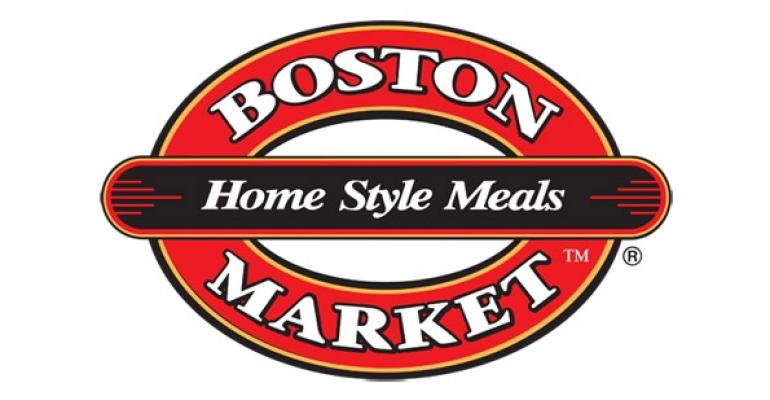“Big Data” is still a concept that many leaders in the restaurant industry are trying to grasp, and one of the tactics for experimenting with customer data collection and targeting is the card-linked offer, seen in a recent program at Boston Market.
The Denver-based fast-casual chain ran a test of edo Interactive’s card-linked offers in May 2012 and is running a similar program this year, where customers are given a $3 rebate instantly when they spend $15 more on a debit or credit card linked to receive such offers. Consumers enroll in the program through their banks or credit card issuers, which then alert the cardholders to offers from merchants like Boston Market via email, text or mobile-app notifications.
RELATED
• Boston Market rolls out ribs
• Boston Market: Consumer concern top reason for sodium reduction
• More fast-casual news at NRN.com
The pitch to cardholders is that the debit cards they already use daily would then function as loyalty cards at stores they visit, without them having to clip coupons or print out daily deals.
Boston Market pays a small fee per redemption, but the card-linked offers have resulted in greater average checks when redeemed, largely paying for themselves, said chief brand officer Sara Bittorf. Other guardrails for the nearly 500-unit chain’s investment in card-linked offers include a total budget that Boston Market can set for a promotion, which ends as soon as the rebates and fees meet that amount.
One of the greatest benefits of running a card-linked offer, she added, is the demographic information and purchasing behavior Boston Market can see by tracking what customers do with their linked cards at the restaurant.

Bittorf spoke to Nation’s Restaurant News about Boston Market’s foray into card-linked offers and what it is teaching the brand about Big Data.
What drew Boston Market to the card-linked offers space?
One of the best things about this is it’s one of the ways to figure out how to use Big Data. When they deliver us a report, I can understand what my average ticket is and who I’m targeting. I know people have been to a Boston Market before but haven’t been in the past 60 days, for example. This is a frequency play for us, and we’re getting incremental visits we would not have gotten.
I liked how this runs in the background and is easy to manage. It’s not quite “set it and forget it,” but at least you can let it run, read the data and make some corrections. It guarantees a certain level of revenue that we could count on and make a positive return on investment.
This seems like a way for restaurants to play “Moneyball” with their digital marketing, encouraging some repeat traffic while the broadcast marketing builds demand for certain products, like Boston Market’s popular ribs.
It is by design, and it does end up working for us. You’re right in that our primary media play is in broadcast, and our No. 1 objective there is to generate top-of-mind awareness for our LTOs. That can get people aware of you, but you need subsequent tactics that will get them into Boston Market and make an actual purchase.
You see an ad, and then if you see an offer linked to your credit card, you’re more likely to make a visit. Broadcast marketing is like firing off a shotgun, and this is like a rifle, where we can get a lot more targeted at people with a greater likelihood of coming in. For me, it’s like yin and yang, where one form is never going to work without the other.
How do you view the execution of card-linked offers?
It hasn’t just been about the ease to the consumer, but also the ease in the restaurant. It’s a transaction that has no impact at the restaurant level. [Our cashiers] don’t have to be aware of any offer or enter a coupon code, so they’re unaware of the offer altogether. From an operations standpoint that is critical because we have enough going on in our restaurants. We’ve been adding and adding and adding sales layers, plus our employees are responsible for bussing and running food now.
Has Boston Market gleaned an insight from this yet that has brought about a major change?
No changes yet. We’re just beginning to dig into the data, but we have two programs’ worth now from the test last year and the one running now. We’ll get information that can help us refine our targeting and understand who our more likely targets would be. We saw in the test that younger families were more likely to opt in and take advantage of offers, for example.
It’s not a secret that it’s easier to get one more visit from a current customer than it is to acquire a new customer. So who are the people mostly likely to make the extra visit, and what can motivate them to do that? What do they look like, and how often do they visit restaurants in general? I could use that information to refine my media buying or help new-product development, so it can help in a lot of different ways if we can get a better handle on who that person is.
Contact Mark Brandau at [email protected].
Follow him on Twitter: @Mark_from_NRN




